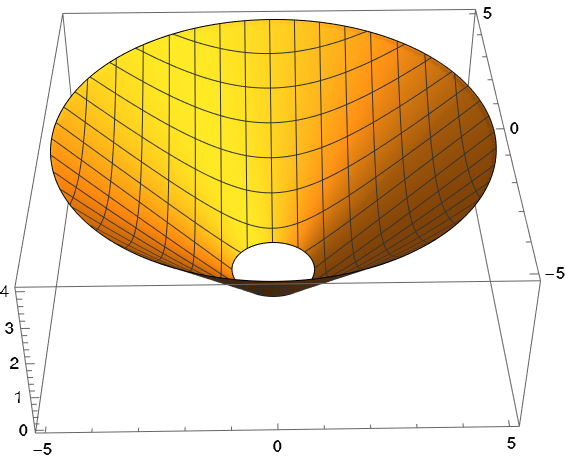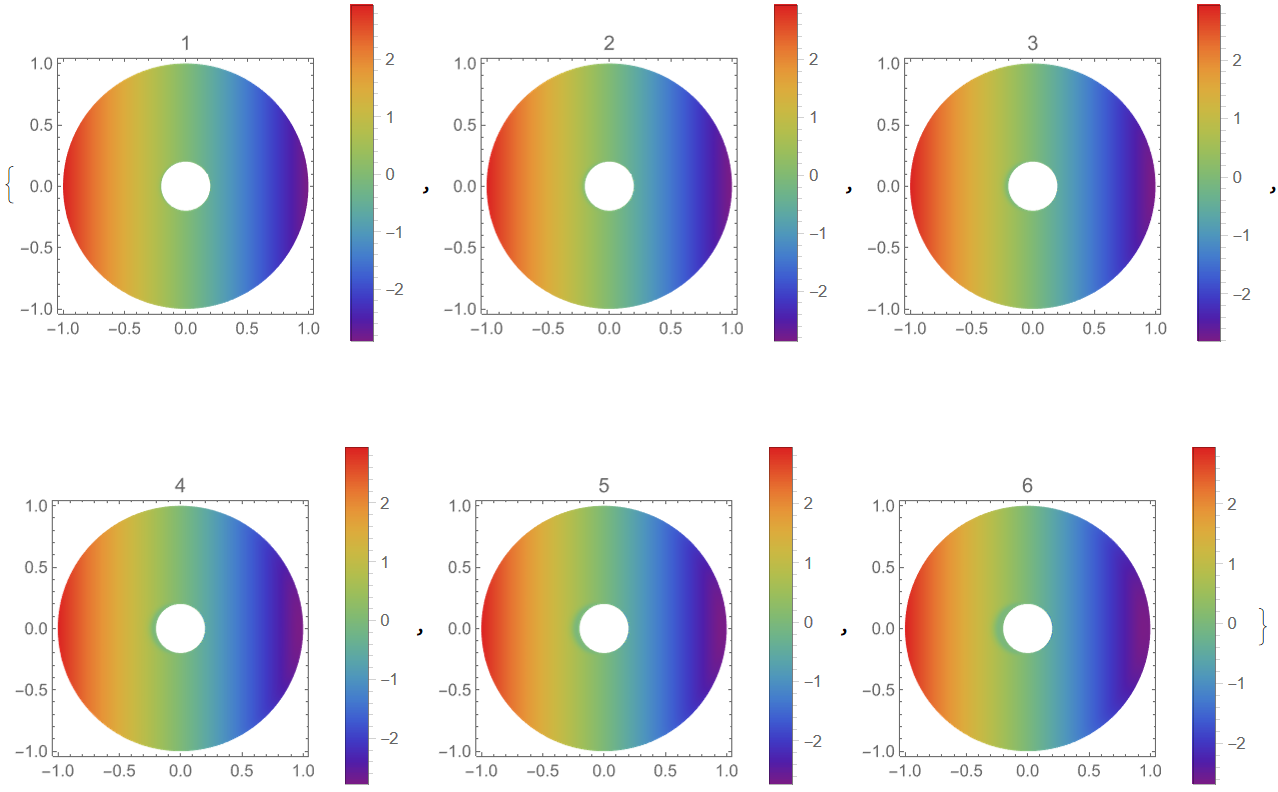Lately, I've been trying to solve the following PDE: \begin{equation} -v_0 |\nabla F| + {\bf f}\cdot \nabla F +D\nabla^2F = -1 \end{equation} inside a 2D region between two disks both centered in the origin with radii $r=1$ and $l=5$ respectively. The boundary conditions are $F=0$ on the inner circle and $\hat{n}\cdot\nabla F=0$ on the external one. Here is the code I have written:
v0 = 1.; D1 = 0.01; f = 0.7;
r2 := 1; l2 := 5; cell2 := 0.001;
\[CapitalOmega]2 =
RegionDifference[Disk[{0, 0}, l2], Disk[{0, 0}, r2]];
pde2 = D1 Laplacian[FF[x, y], {x, y}] + f D[FF[x, y], x] -
v0 Sqrt[D[FF[x, y], x]^2 + D[FF[x, y], y]^2] ;
dcond2 = DirichletCondition[FF[x, y] == 0, x^2 + y^2 == r2^2];
Fsol = NDSolveValue[{pde2 == -1 + NeumannValue[0., x^2 + y^2 == l2^2],
dcond2}, {FF[x, y]}, {x, y} \[Element] \[CapitalOmega]2,
Method -> {"PDEDiscretization" -> {"FiniteElement",
"MeshOptions" -> {"MaxCellMeasure" -> cell2}}}];
 However, as you can see I am getting some error messages but I don't know why nor how to deal with them.
I actually think this is coming from the sqrt in the $|\nabla F|$ term, but I can't get rid of that. Hope it is clear enough and thanks in advance for your help!
However, as you can see I am getting some error messages but I don't know why nor how to deal with them.
I actually think this is coming from the sqrt in the $|\nabla F|$ term, but I can't get rid of that. Hope it is clear enough and thanks in advance for your help!



